

Lasting Ties Between Rikuzentakata and Singapore
|
It has been 11 years since the 2011 Great East Japan Earthquake and Tsunami, in which Rikuzentakata City lost approximately 8% of its population and 80% of its residential areas. The city was one of the areas that was most devastated by the disaster. Previously, there were over 70,000 pine trees along the Rikuzentakata coast, and this stunning coastal forest was known as Takatamatsubara (Takata Pine Grove). The tsunami swept away all but one pine tree, which came to be known as the Miracle Pine, serving as a constant symbol of hope and resilience. True to the symbol of the Miracle Pine that continues to stand tall today, the city has made remarkable recovery since then, with its new old town centre elevated by over 12 metres. In fact, Singapore, along with other countries across the globe, showed strong support to Rikuzentakata.
Following the disaster in 2011, the Singapore Red Cross launched a donation drive supported by the Singapore government, and the people of Singapore donated a sum of S$35.7 million. At that time, it was largest or second largest amount of donation contributed by Singaporeans for a disaster overseas, and it may still be today. Alongside with the donation, a special request was also put forth, for the donation to be used for something concrete in order to benefit the local community. During a photo exhibition held by Aid TAKATA that showed the aftermath of the disaster in Rikuzentakata City, the Singaporean Ambassador at that time met the mayor of Rikuzentakata and asked what was most needed. In response, the mayor’s answer was a place for people to gather and foster a sense of community. As during such tough times, it was especially important for people to be able to connect and engage in conversation, to create hope and build towards a common goal. This sparked the community hall project, a space for people to come together and hence uplift their spirits. Tange Associates was tasked with the construction upon Singapore’s recommendation and Rikuzentakata’s approval. The building is on elevated ground, and consideration was taken to avoid building it right on the coast. However, the residents have grown up and lived with Hiroto Bay as a part of their lives. Hence, the building still overlooks the sea in order to maintain this connection. Even during the construction phase, the project was met with positive response from the residents, who were looking forward to it. With a budget of S$11.1 million, the 2,000 square-metre community hall was eventually completed in March 2015, and now functions as a community space for over 20,000 city residents. Besides its original purpose, the community hall also functions as a disaster relief centre by integrating the fire and police departments. There are numerous mentions of Singapore within the community hall to commemorate Singapore’s support, such as a Merlion statue replica, a plaque detailing the relationship between Rikuzentakata and Singapore, and the event hall being named after Singapore. The exchanges between Rikuzentakata and Singapore continue even until today. The experiences, lessons and reflections have been shared at Singapore Red Cross Academy, World Cities Summit in Singapore, and even at JCC. The community hall in Rikuzentakata holds cross-cultural fairs and exhibitions on a regular basis. While the Tokyo 2020 Host Town Initiative could not be followed through due to the pandemic, exchanges with Singaporean athletes still took place. There also have been tours organised for Singaporeans to visit Rikuzentakata and deepen their understanding of the city’s recovery and unique charms. |
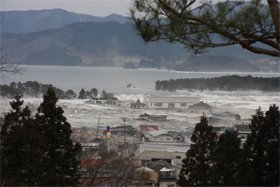 Takatamatsubara was submerged in a huge tsunami © Rikuzentakata City 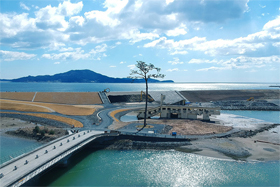 Takatamatsubara Memorial Park © Michinoeki Takatamatsubara 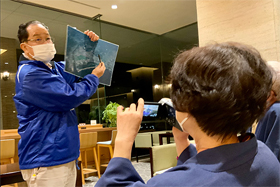 An eyewitness describing Takatamatsubara before the disaster © Rikuzentakata City 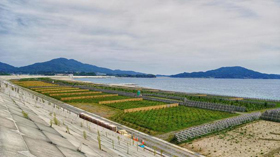 Hiroto Bay © photo AC 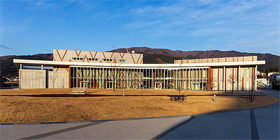 Rikuzentakata City Community Hall © Yasu, CC BY-SA 3.0, via Wikimedia Commons 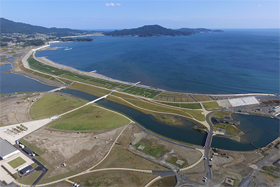 Takatamatsubara after renovations © Rikuzentakata City |
| Perhaps you can consider visiting the city one day, and personally experience the strong friendship between Rikuzentakata and Singapore. |
Resources
|
Schauwecker, Stefan. 2020. “Nine years after the tsunami”. Japan Up Close. https://japanupclose.web-japan.org/spot/s20201021_2.html. “Rikuzentakata. Not Your Average Japan”. 2022. Rikuzentakata. Accessed 25 July. http://visit-takata.jp/. “Rikuzentakata City Community Hall”. 2017. Tange Associates. Accessed 25 July. https://en.tangeweb.com/project/rikuzentakata/. Lim, Wei Da, & Khew, Joanne. 2016. “Rikuzentakata: Rebuilding with Resilience”. Centre for Liveable Cities. https://www.clc.gov.sg/research-publications/publications/digital-library/view/rikuzentakata-rebuilding-with-resilience. “Singapore Red Cross Delivers Final Rebuilding Project of Japan’s 2011 Tsunami”. 2015. Singapore Red Cross Society. https://www.redcross.sg/media-centre/press-releases/231-singapore-red-cross-delivers-final-rebuilding-project-of-japan-s-2011-tsunami.html. “Lessons from Disaster: Rebuilding Rikuzentakata – The Strength of the Human Spirit”. 2016. Singapore Red Cross Society. https://www.redcross.sg/news-stories/events/419-lessons-from-disaster-rebuilding-rikuzentakata-the-strength-of-the-human-spirit.html. |
|
Japan Creative Centre 4 Nassim Road, Singapore 258372 +65 6737 0434 / jcc@sn.mofa.go.jp https://www.sg.emb-japan.go.jp/JCC/ Nearest parking at Orchard Hotel & Delphi Orchard |
 |